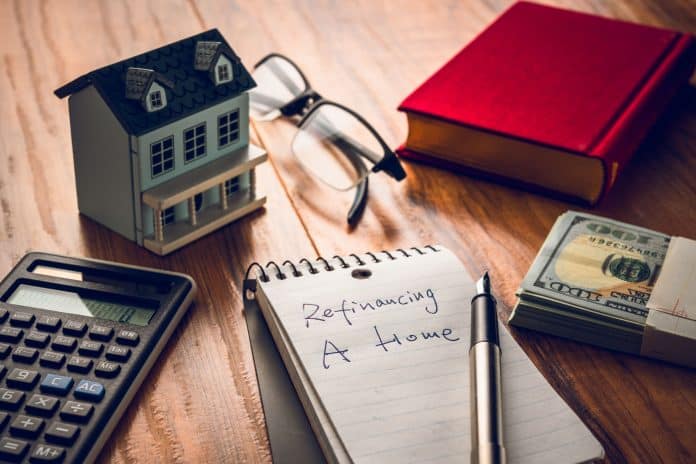
Being a homeowner can be complicated. One part of homeownership is refinancing. Refinancing your home is the process of replacing your existing mortgage with a new one. However, there are a variety of different refinances that you can consider. The best way to choose which refinance would be best is by speaking to a professional. However, it can be helpful to learn about your options so that when you speak to a professional, you can have more context.
Different Refinance Options
Each refinancing option can help homeowners in a different way. There are different kinds of refinances which include (but are not limited to):
- Cash-Out Refinance
- Rate-and-Term Refinance
- Cash-In Refinance
- FHA Streamline Refinance
- Reverse Mortgage
- No-Closing-Cost Refinance
Cash-Out Refinance
Homeowners that want to tap into their home equity and get cash out of their home can benefit from this type of refinance. A cash-out refinance provides homeowners the opportunity to replace their existing mortgage with a new one that is larger than what they owe on the original. That is because they borrow against the equity that they’ve built up. The difference between the existing loan balance compared to the new loan balance will be given in cash. Under the new mortgage agreement, you may not have the same monthly payment but it will vary based on the setup.
Let’s look at an example. If you bought a home for $250,000 and you paid $60,000 so far then you would still owe $190,000. You could tap into some of your equity by getting a new mortgage amount for $200,000 instead of just the $190,000. This allows you to get $10,000 out of your home! You can then use this $10,000 however you’d like but it is best to be responsible with the funds.
Rate-and-Term Refinance
This is what comes to mind for most homeowners when they think of a standard refinance. In a rate-and-term refinance borrowers can change the terms of their mortgage like reducing their interest rate, updating their loan terms, and more.
If you choose this type of refinance, you may be able to save hundreds. Let’s look at an example! If your original 30 year mortgage had an interest rate of 4.25% you may decide you want to refinance after 8 years when interest rates are low. When you get a rate-and-term refinance, you could reduce your interest rate down to 3.75% and update the repayment term down to 15 years.
Cash-In Refinance
A cash-in refinance is basically the opposite of a cash-out refinance. Instead of taking cash out of the home, the borrower can choose to provide more funds during the refinance process so that they can improve their loan-to-value ratio (LTV).
Your LTV ratio is a percentage figure that measures the value of the home (based on the appraisal) compared to the loan amount that you plan on borrowing. A good rule of thumb is the lower your LTV then the less risky your mortgage will be in the eyes of the lender. That’s why when you pay cash in during a cash-in refinance, you improve your LTV which looks better as a borrower.
Not only can a homeowner improve their LTV but they can also increase their equity which in turn could lead to more affordable monthly payments and a reduced interest rate. Those with underwater mortgages or those with little home equity typically like this refinancing option.
FHA Streamline Refinance
The Federal Housing Administration (FHA) provides this streamline refinance option to eligible homeowners. This is a popular option for subprime borrowers because it can help lower their monthly payment and provide opportunities for homeowners whose mortgage is underwater (which means they owe more than the value of the home). Not only that but an FHA streamline refinance may not even need a credit check, home appraisal, or income verification. This means the refinance process could also be even faster and easier to qualify for!
Reverse Mortgage
Many people don’t realize that a reverse mortgage is a type of home refinance! This option is only available to seniors who are at least 62 years old that have a qualifying amount of equity. This is a popular option for homeowners because those who choose this refinance will not need to make payments on their loan while they’re alive.
Sadly a reverse mortgage isn’t all rainbows and butterflies. Homeowners will still need to pay certain fees over the course of their loan term. Once the homeowner dies or sells the home, the loan balance will be due to your lender through either the money from the home sale or through payments made by your family after you pass away.
No-Closing-Cost Refinance
If it sounds too good to be true, it likely is. A no-closing-cost refinance is an attractive option for homeowners because normally the closing costs on a property can be thousands of dollars. Instead of paying thousands, having to pay nothing sounds way better. However, even though there aren’t traditional closing costs, lenders still find a way to have homebuyers pay for them. They may roll closing costs into the total loan amount, or they may be covered by getting a higher interest rate on the loan. Regardless of how they try to hide them, the costs are still there in one way or another. It just means that there will be no closing costs upfront!
Overall
There are a variety of refinancing options available that may be able to help. You will want to review these options before you speak to a refinance professional so that you can have a better idea of what you want. Before deciding on a refinance, you want to understand your motivation! Whether you want to tap into your equity, update your loan terms, improve your LTV, etc., you will want to find out why you are looking to refinance.
There are more opportunities than you may realize, even if you are dealing with some financial hardship. Take your time, research, and you may find that a refinance is not only possible for your situation, but can help improve it as well!

















